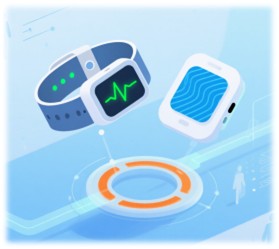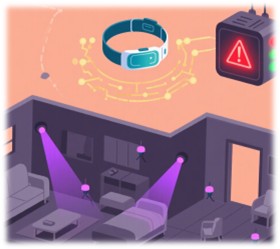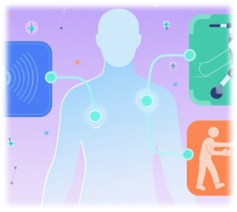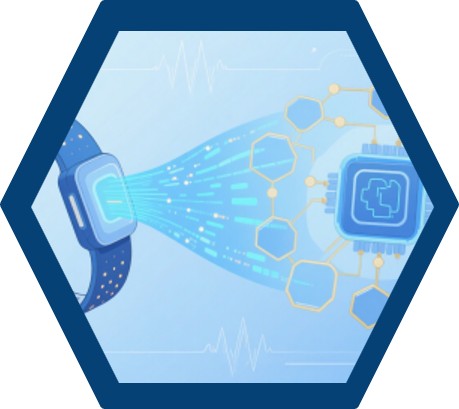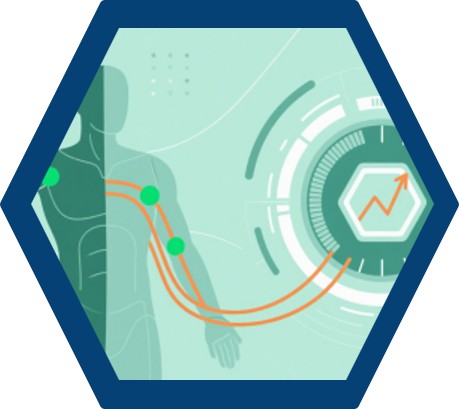The integration of advanced sensor technology into healthcare systems has revolutionized the way we approach health monitoring and rehabilitation. These innovations offer unprecedented capabilities for continuous, real-time monitoring of vital signs, physical activities, and rehabilitation progress. This article explores the latest advancements in sensor technology, focusing on their applications in continuous health monitoring, physical rehabilitation, and assistive systems. We will delve into the scientific principles behind these technologies, their practical applications, and the potential they hold for transforming healthcare.
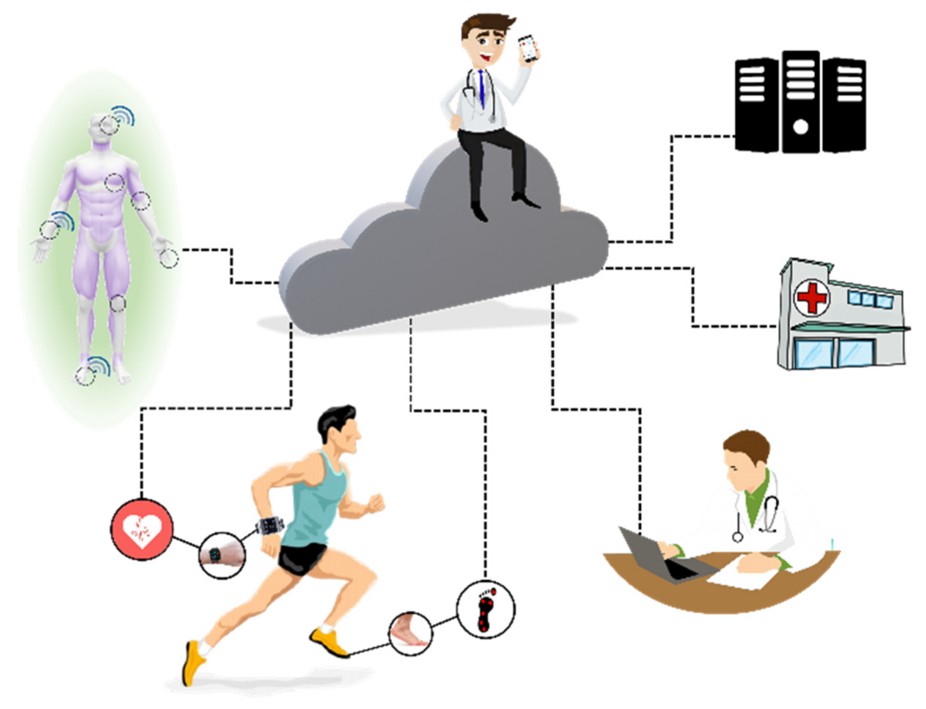 Fig.1 Health 4.0 concepts: IoT and new measurement technologies make the customization of health possible. (Nascimento L. M. S., et al., 2021)
Fig.1 Health 4.0 concepts: IoT and new measurement technologies make the customization of health possible. (Nascimento L. M. S., et al., 2021)
Continuous Health Monitoring with Wearable Sensors
Overview of Wearable Sensors
Wearable sensors have become indispensable tools in modern healthcare, enabling continuous monitoring of various health parameters. These devices can measure heart rate, blood pressure, blood glucose levels, and even detect falls in elderly patients. The data collected is transmitted to healthcare providers, allowing for timely interventions and better management of chronic conditions. The evolution of these technologies is driven by the need for more accessible, affordable, and efficient healthcare solutions.
Applications in Chronic Disease Management
Continuous health monitoring is particularly beneficial for patients with chronic conditions such as diabetes, cardiovascular diseases, and respiratory disorders. For instance, continuous glucose monitoring (CGM) systems allow patients to track their blood glucose levels in real-time, providing critical insights for managing their condition. Similarly, wearable devices that monitor heart rate and blood pressure can help in the early detection and management of cardiovascular diseases.
Case Study: Continuous Blood Pressure Monitoring
A recent study by Zhang et al. (2019) demonstrated the use of a wearable fiberless optical sensor for continuous monitoring of cerebral blood flow in mice. This technology has the potential to be adapted for human use, providing critical insights into brain health and early detection of neurological issues. The study showed that the sensor could accurately measure blood flow changes, offering a non-invasive and continuous monitoring solution.
Home Medical Assistance Systems
Overview of Home Medical Assistance
Home medical assistance systems leverage wearable technology to provide care and support to patients in their homes. These systems can monitor patients' conditions, alert caregivers to emergencies, and even assist with daily activities. The integration of environmental sensors further enhances the safety and independence of elderly patients.
Applications in Elderly Care
For elderly patients, home medical assistance systems can significantly improve their quality of life. A study by Meinel et al. (2014) used an omnidirectional camera to monitor patient movements and detect potential falls, providing real-time alerts to caregivers. This system not only enhances patient safety but also reduces the burden on caregivers.
Case Study: Intelligent Notification System
Another notable development is the use of environmental sensors to enhance home safety for elderly patients. Zaric et al. (2017) presented a low-cost intelligent notification and alarming system that uses data from various sensors to detect hazardous situations and alert caregivers. The system includes sensors for detecting gas leaks, smoke, and unusual movements, providing a comprehensive safety solution.
Sensors in Physical Rehabilitation
Overview of Rehabilitation Sensors
Physical rehabilitation is another area where sensor technology has made significant strides. Sensors are used to monitor patient movements, track progress, and provide feedback to both patients and healthcare providers. This technology is particularly beneficial for patients recovering from injuries, surgeries, or neurological disorders.
Gait Analysis and Pressure Foot Evaluation
Gait analysis is crucial for assessing and improving the walking patterns of patients with mobility issues. Sensors such as inertial measurement units (IMUs) and force sensors are used to monitor gait parameters and provide valuable insights into patient progress. For example, a study by Cui et al. (2018) used a combination of kinematic, kinetic, and electrophysiological data to assess post-stroke hemiparetic gait. The fusion of these data sources allowed for a comprehensive evaluation of gait abnormalities and provided a basis for targeted rehabilitation strategies.
Case Study: Upper and Lower Limb Rehabilitation
Upper and lower limb rehabilitation often involves the use of wearable sensors to monitor movement and provide feedback. These sensors can track muscle activity, joint angles, and overall limb function, aiding in the development of personalized rehabilitation programs. Thakur et al. (2018) developed a soft wearable augmented walking suit with pneumatic gel muscles and stance phase detection systems to assist gait in stroke patients. This technology not only supports patient mobility but also enhances the effectiveness of rehabilitation exercises.
Assistive Systems for People with Disabilities
Overview of Assistive Systems
Assistive systems are designed to enhance the independence and quality of life for people with disabilities. These systems use a variety of sensors to provide support in communication, mobility, and daily activities. The integration of advanced sensor technology has led to the development of more sophisticated and user-friendly assistive devices.
Communication Assistance
For individuals with speech or mobility impairments, assistive communication devices are essential. These devices often use sensors to detect facial movements, eye gestures, or brain signals to facilitate communication. For example, Shao (2019) developed a system that recognizes facial movements using multichannel EMG signals. This technology allows individuals with limited mobility to communicate through facial expressions, significantly improving their quality of life.
Case Study: Mobility Assistance
Mobility assistance devices, such as wheelchairs controlled by sensors, are another area of innovation. These devices can be controlled by various means, including eye movements, brain signals, or even head movements, providing greater independence to users. Kim (2016) developed a wheelchair navigation system that uses a combination of camera and ultrasonic sensors to detect obstacles and navigate the environment. This technology enhances the user's ability to move around safely and independently.
The Role of Data Processing and Machine Learning
Data Processing in Sensor Technology
The vast amount of data collected by these sensors requires sophisticated processing and analysis. Machine learning algorithms are increasingly being used to interpret this data, providing actionable insights and predictions. For instance, a study by Xie et al. (2019) developed a low-cost and highly sensitive wearable sensor for health monitoring. The data collected from these sensors can be analyzed using machine learning algorithms to detect early signs of health issues, enabling timely interventions.
Machine Learning in Rehabilitation
Machine learning also plays a crucial role in physical rehabilitation. Algorithms can analyze data from sensors to track patient progress, identify patterns, and provide personalized recommendations. This technology enhances the effectiveness of rehabilitation programs and improves patient outcomes.
Challenges and Future Directions
Ensuring Data Accuracy and Privacy
While the advancements in sensor technology are promising, there are several challenges that need to be addressed. Ensuring data accuracy and maintaining user privacy are critical issues. Standardized protocols for data collection and analysis are also necessary to ensure consistency and reliability.
Future Innovations in Sensor Technology
Future directions in this field include the development of more advanced sensors, integration with artificial intelligence, and the creation of comprehensive healthcare platforms that combine monitoring, rehabilitation, and assistive technologies. These innovations will further enhance the capabilities of sensor technology in healthcare.
Conclusion
The integration of sensor technology in healthcare is transforming the way we monitor and rehabilitate patients. From continuous health monitoring to assistive systems for people with disabilities, these innovations are enhancing the quality of care and improving patient outcomes. As technology continues to advance, we can expect even more sophisticated and effective solutions in the future.
If you have related needs, please feel free to contact us for more information or product support.
Reference
- Nascimento, Lucas Medeiros Souza do, et al. "Sensors and systems for physical rehabilitation and health monitoring—A review." Sensors 20.15 (2020): 4063.
These products and services are for research use only and cannot be used for any clinical purposes!



 Fig.1 Health 4.0 concepts: IoT and new measurement technologies make the customization of health possible. (Nascimento L. M. S., et al., 2021)
Fig.1 Health 4.0 concepts: IoT and new measurement technologies make the customization of health possible. (Nascimento L. M. S., et al., 2021) 